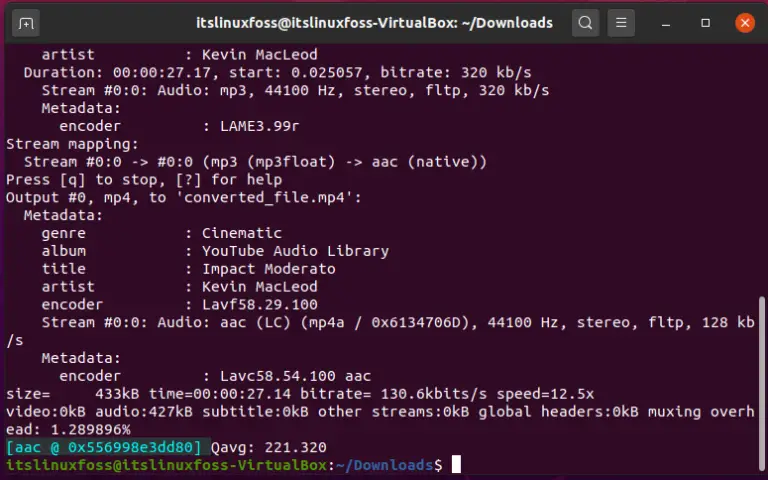

Since there are no pre-requisites for this method, therefore, we will head on towards the installation of FFmpeg on Ubuntu 20.04 straightaway. Method of Installing FFmpeg on Ubuntu 20.04 LTS: In this article, we will show you the method of installing FFmpeg on Ubuntu 20.04 LTS. Another great thing about this software is that it can be used across different platforms i.e. It supports a wide range of different multimedia formats. It is very widely used for video and audio editing and the conversion of videos and audios from one format to another. A major plus point about this software is that it is absolutely free and open source. SSH into your Ubuntu server and update the apt package index.FFmpeg is a software that is designed to handle videos, audios, and other multimedia files of different types. To install FFmpeg on Ubuntu, follow these steps:ġ. Conveniently, you can install FFmpeg through your distro’s package manager, such as apt in Ubuntu. As such, your computer must have decent hardware capacity.įFmpeg is available in the default repositories of most Linux distributions. Multimedia processing is generally a resource-intensive task.

Your computer must have at least 4GB of RAM and a two-core CPU.While the installation method varies, FFmpeg usage should be the same across different operating systems. This tutorial will be using Ubuntu 20.04, Windows 10, and macOS Big Sur for the installation. You’ll need a computer running on a compatible operating system, such as Windows, Linux (RHEL-based, Debian-based, or Ubuntu-based), and macOS.If you’d like to follow along, be sure you have the following. This tutorial will be a hands-on demonstration. Example 4: Extracting Audio from a Video File.Example 3: Changing the Video Resolution.Example 2: Changing the Container without Encoding.Example 1: Basic Conversion with Automatic Codec Selection.Converting Media Files with FFmpeg (Examples).Listing Available Encoders and Decoders.Method 2: Install FFmpeg via Chocolatey.Method 1: Install FFmpeg via PowerShell.


 0 kommentar(er)
0 kommentar(er)
